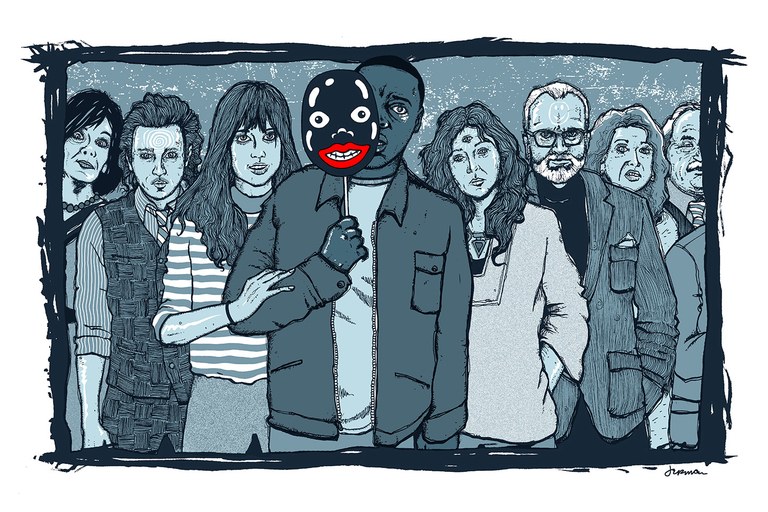“It was hard not to watch that scene without thinking of how important camera phones and video recordings have been for many African Americans experiencing police violence—especially in light of an earlier scene in which Chris is the apparent target of racial profiling by an officer. Cameras, Get Out suggests somewhat plainly, have the power to reveal.” -Lenika Cruz, “In Get Out, the Eyes Have It”
Throughout the film, the role of sight and photography is developed with a sense of critical urgency. At the Armitage house, Chris views whiteness through his camera lens. His camera is an extension of his eye and his physical sight becomes commodified. Jim Hudson, the blind art dealer, tells Chris, “I want your eyes, man. I want those things you see through.”
In the film, the only thing that has the power to revive the small traces of the real inhabits of those bodies is the flash of Chris’s camera. In this instance, they literally “see the light,” which is what it takes for all of them to realize their blackness. Ultimately what ends up saving Chris is ultimately the flash from his camera phone. The flash from Chris’s camera phone jolts Logan back into reality. His nose bleeds and he warns Chris to “get out” after he comes into contact with this flash. Toward the ending of the film, Chris shines his flashlight on Walter as he attempts to choke him. Walter then uses the rifle to shoot Rose and then himself. Over the past few years, police violence is being documented more frequently with cell phone cameras. With the push of a button, these videos are shared globally–posted as “live” Facebook or Instagram videos. The killings of Walter Scott, Tamir Rice, Philando Castile, and Alton Sterling among so many others were
“shot” by bystanders who used their camera phones to document the violence they saw.
“We have been talking about police brutality for years and now because of videos, we are seeing just how systemic and widespread it is” -Deray McKesson, Black Lives Matter activist
In “No-bodies: Law, Raciality and Violence,” Denise da Silva describes how raciality is mapped onto certain bodies. To be a no-body, she describes, is to be a body that can exist in the world but does not exist as a marker of rationality. These no-bodies are obliterated with no ethical outrage. They are neither the subjects nor objects of justice as the law itself conceals this original violence.
The camera phone has been used to bring anti-black police violence into the center of collective, national attention. In Get Out, the flash of a camera phone is a flash back into the actuary fear and terror of living under white supremacy as a black body. It is a warning to reject colorblindness, to “get out” of post-racial ideologies, and to resist the normalization of racialized violence.
